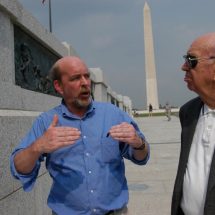Burt Hubbard
February 7, 2012
Editorial director at I-News.
Biography
He was an investigative and computer-assisted reporter for the Rocky Mountain and later the Denver Post before joining I-News in August 2010.
He has taught computer-assisted reporting and Internet research to graduate students for more than 20 years at the University of Colorado School of Journalism and Mass Communication.
In 2012 Burt Hubbard’s team organized a forum in Denver, CO with about 15 local minority leaders on April 25 to present the initial findings of his research showing growing gaps between white, black and Latino Americans.
You can learn about Burt, here.
Interview
Why does immigration reporting matter today?
In the ever shrinking world immigration has become a major issue for the U.S. and Europe and is emerging as a significant phenomenon in Africa, Asia and South America as recipients of immigrants. Immigration is a major economic driver in many countries, but also a divisive factor that impacts elections. It is up to reporters to bring impartial, in-depth analysis of the issues to their stories.
What resources would you recommend on the topic? (articles, websites, video, movies, books, etc.).
There are several good web sites on immigration.
Two of the best web sites are the Pew Research Center and the Migration Policy Institute. The New York Times has a good immigration resource page that has all sorts of good links and stories (learn more here).
Rocky Mountain News did an in-depth series on the contradictory U.S. immigration policy called the Border Within in June 2006.
The U.S. government citizenship agency site has great historical information on immigration including the number of people entering the U.S. by year and country.
What makes an outstanding reporter?
The top-notch reporters combine the ability to do in-depth research, write clearly so readers or viewers can easily understand complex issues and present it in an unbiased fashion.
Who are your journalism inspirations?
To produce stories that make a difference in people’s lives and prompt officials to change policies to address shortcomings. Also, I want to teach up-and-coming reporters how to do data analysis so they can produce in-depth stories that make a difference.
While on the ground, what is your most memorable anecdote?
The photographer and I were doing a series on immigration in the U.S.
We traveled to the west side of Colorado to a small county to interview the sheriff on immigration issues.
Out of the blue, the sheriff took us into the middle of the jail with immigrants who had been arrested for crimes in the U.S. There were about 50 people in the jail. He let us interview anyone in jail we wanted.
Since most of the inmates spoke only Spanish, we used other inmates as interpreters. We spent four hours interviewing people from Mexico, South and Central America about the dangers they encountered making their way to the U.S.
What are your next projects?
We will be working on several stories about the rising obesity rates among both children and adults.
We also will be looking at the elections this fall and analyzing the campaign contributions.



